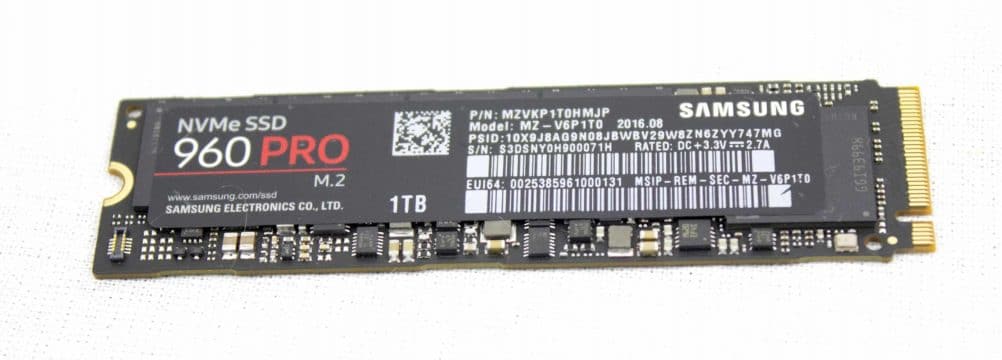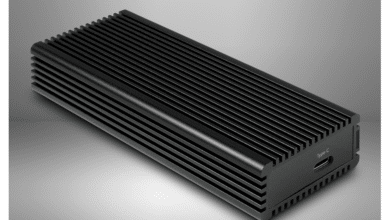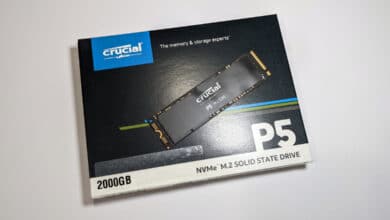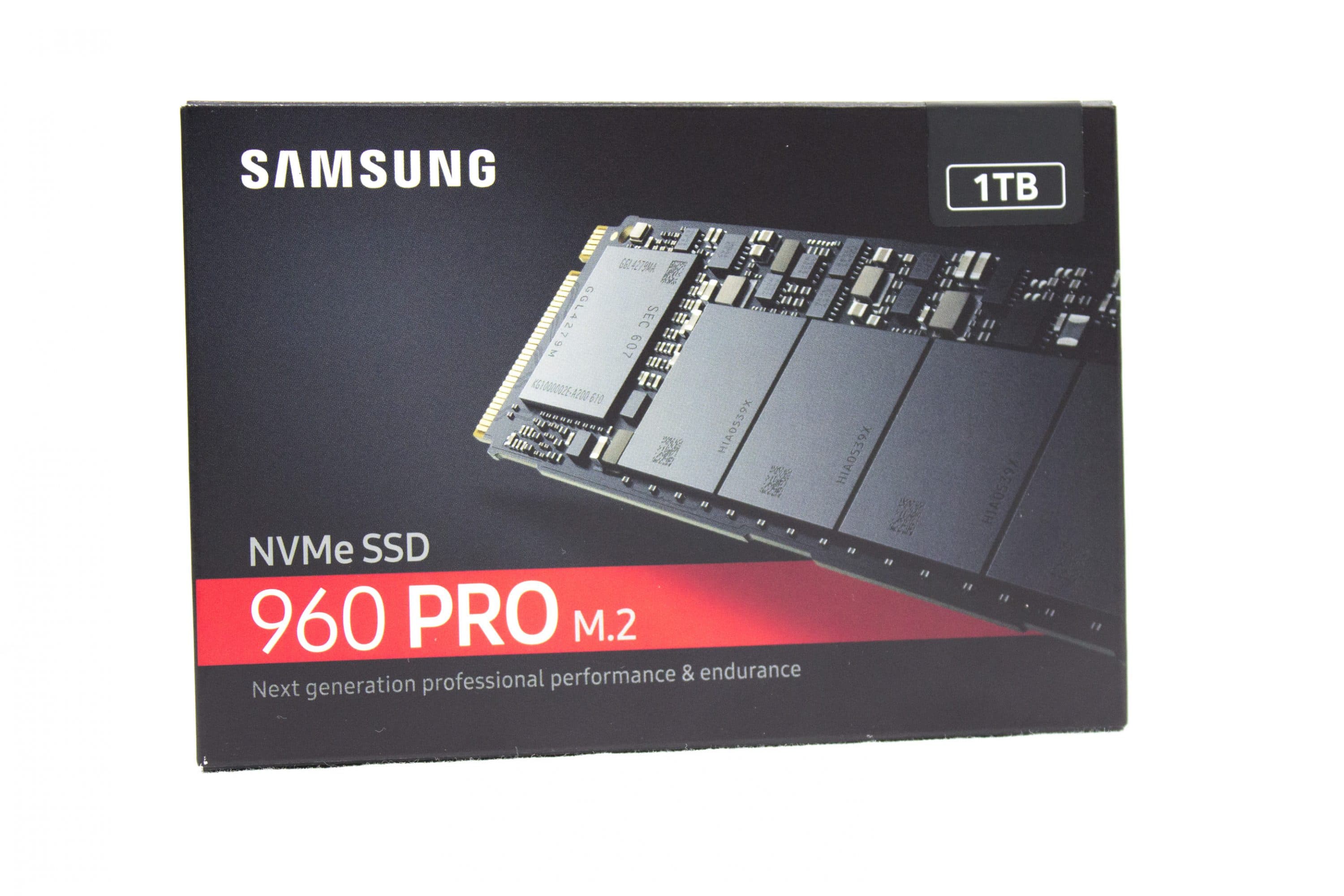
In September, Samsung presented its new SSD generation at the Samsung SSD Global Summit 2016 in Seoul: The new 960 Evo and 960 Pro. Next month is the time and we can also buy the new models. We have already tested the new Samsung SSD 960 Pro with 1 TB.
The SSD 960 Pro uses the NVMe standard and is connected to an M.2 slot. This is also necessary, because this interface is already almost fully utilized. With SATA or mSATA you would never reach these speeds. Samsung promises up to 3,500 MB/s read and 2,100 MB/s write and 440,000 IOPS read and 360,000 IOPS write respectively. Since M.2 is connected via PCI-Express 3.0 with 4 lanes, a maximum of 4,000 MB/s is possible here. According to the technical specifications, the SSD is already nibbling on this. We have investigated whether this is really true for you.
Our test model is a pre-series drive with firmware version 1B6QCXP7. At the end of November/beginning of December a new software version will be released. Therefore, the test results may differ with the serial drive.
Technical Data of the Samsung SSD 960 Pro

| 960 PRO 512 GB | 960 PRO 1 TB | 960 PRO 2 TB | |
|---|---|---|---|
| Sequential reading speed | Up to 3,500 MB/s | ||
| Sequential write speed | Up to 2.100 MB/s | ||
| 4 KB Random Read (QD32, 4 Threads) | Up to 330,000 IOPS | Up to 440,000 IOPS | |
| 4 KB Random Write (QD32, 4 Threads) | Up to 330,000 IOPS | Up to 360,000 IOPS | |
| 4 KB Random Read (QD1, 1 thread) | Up to 14,000 IOPS | ||
| 4 KB Random Read (QD1, 1 thread) | Up to 50,000 IOPS | ||
| Interface | PCIe 3.0 x4, NVMe 1.1 | ||
| Form factor | M.2 | ||
| Controller | Samsung Polaris Controller | ||
| NAND Flash memory | Samsung V-NAND | ||
| DRAM cache memory | Samsung 512 MB Low Power DDR3 | Samsung 1 GB Low Power DDR3 | Samsung 2 GB Low Power DDR3 |
| Data security | AES 256-bit encryption | ||
| Reliability | MTBF: 1.5 million hours | ||
| Energy consumption | Active Average: 5.1 W Idle: 1.2 W |
Active Average: 5.3 W Idle: 1.2 W |
Active Average: 5.8 W Idle: 1.2 W |
| Functions | TRIM (operating system support required), Garbage Collection, S.M.A.R.T, Dynamic Thermal Guard temperature monitoring | ||
| Temperature | operating temperature 0 °C to +70 °C | ||
| Humidity | 5 % to 95 %, non condensing | ||
| Vibration | Non-Operating: 20-2.000 Hz, 20 G | ||
| Strokes | Non-Operating: 1,500 G , duration 0.5 ms, 3 axes |
||
| TBW | 400 TB | 800 TB | 1,200 TB |
| Price | 329,00 € | 619,00 € | 1.299,00 € |
| Guarantee | 5 years limited manufacturer warranty | ||
Test systems
Test system #1: With onboard M.2 slot
Our first system relies on high-end components that already contain a current M.2 slot. The test system recognizes the SSD 960 Pro also without problems in the UEFI.
- Asus Z170-A Mainboard
- Intel Core i7 6700K Processor
- 16 GB Corsair Vengeance DDR4-2400 RAM
- Zotac GeForce GTX 980 Ti AMP! extreme graphics card
- 500 GB Samsung 850 Evo SSD
- 600 Watt be quiet! system power 8 Non-Modular 80+ power supply
Test system #2: With retrofitted M.2 slot
The second test system is already two years old and still uses the old 1150 socket. The motherboard does not have an M.2 slot, which is why it was retrofitted with a Asus Hyper M.2 X4 Mini PCIe card. Unfortunately, this means that the card is not recognized correctly in the UEFI and cannot be booted from the SSD. Unfortunately it misses its purpose as a system disk a little, but we didn’t want to withhold the data from you.
- ASRock Z87E-ITX Mainboard
- Intel Core i7 4770K Processor
- 16 GB Crucial Ballistix Sport DD3-1600 RAM
- Asus Hyper M.2 X4 Mini PCIe card
- 250 GB Samsung 840 Evo SSD
- 530 Watt be quiet! Pure Power L8 CM Modular 80+ Power Supply
Benchmarks
AS SSD Benchmark
AS SSD uses the Force Unit Access (FUA) command. This means that write operations are not reported back as successful until the data has finally landed in the NAND flash of the SSD. Since this process takes time, the data transfer rate also decreases accordingly.
Benchmark programs such as Chrystal Disk Mark are programmed so that they do not use the FUA command. Accordingly, the data transfer rate is higher here.
FUA commands are automatically ignored by the Windows NV-Me driver if there are capacitors for power loss protection on the SSD and the SSD reports this accordingly.
FUA can also be manually disabled by opening the disk properties in the Device Manager and selecting the option “Disable Windows-initiated emptying of device write cache” under Policies.
When determining the read rate with AS SSD it is a little different. When determining the sequential reading speed, AS SSD sends 32 commands, waits several hundred microseconds and then sends out the next 32 commands. With “slower” SSDs (e.g. SATA 6Gb/s), these microseconds are not significant over the entire test cycle, but with fast SSDs it is noticeable, which results in poorer sequential read rates due to the test procedure.
Our tests were carried out without changing the properties of the data carrier, which is why the speed in AS SSD is sometimes very low. Here we still have a screenshot with disabled FUA, but not under ideal test conditions.
AS SSD Compression Benchmark

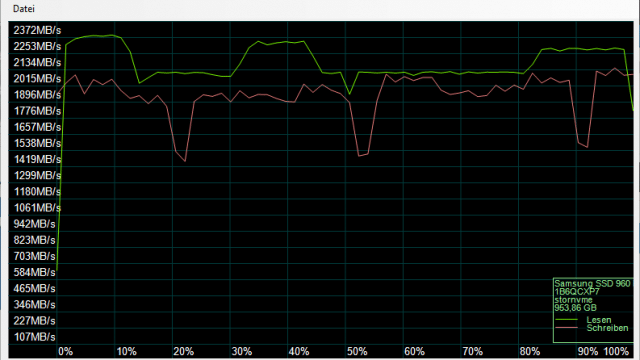
AS SSD Copy Benchmark
Crystal DiskMark
Crystal DiskMark has been set to 9 passes with 50 MB blocks. The test data are randomly generated by the program and are therefore very practical. However, the tool only outputs the maximum data rate reached.
ATTO Disk Benchmark
With ATTO Disk Benchmark you can easily find out how the SSD handles different file sizes. The test run of the 960 Pro is very typical, with small files the speed decreases. However, the SSD is also significantly faster there than the usual SATA SSDs.
HD Tune
Access Times
Also here AS SSD has unfortunately caused problems with the measurement, therefore it pays particular attention to the HD tune value.
Conclusion
With the 960 Pro, Samsung has once again given its SSDs a significant speed boost compared to the 950 Pro. The competition can’t keep up. Unfortunately, the benchmarks are also partly not yet designed for this. You can see that especially with AS SSD, but HD Tune doesn’t follow either. During my test I was surprised that ATTO Disk Benchmark for reading and writing spits out very similar results – for both test systems. Only Crystal DiskMark reached the speeds advertised by Samsung and in some cases even exceeded them. However, the pre-series model is not yet fully developed, Samsung is already working on a new driver.
If you don’t have an M.2 slot: Buy a new motherboard rather than an expansion card. Otherwise you probably won’t be able to boot from the SSD and it misses its purpose.
I can only recommend the Samsung SSD 960 Pro to real speed fanatics or professional users, after all it is not one of the inexpensive entry-level models. When starting the operating system or any programs you will rarely notice a big difference. Unless you really need to load large files from the SSD into your RAM – this is true for photo or video editing, for example. With up to 1.2 Petabyte TBW (Total Bytes Written) in the five-year warranty period, however, life expectancy could also be greatly increased.
Samsung SSD 960 Pro 1 TB
Access Time
Transfer Rate (read)
Transfer Rate (write)
Value for Money
Fast, faster, 960 Pro!
With the SSD 960 Pro, Samsung has once again consolidated its leading position in the flash memory market. The SSD outperforms the competition and almost exhausts the current M.2 slot.
